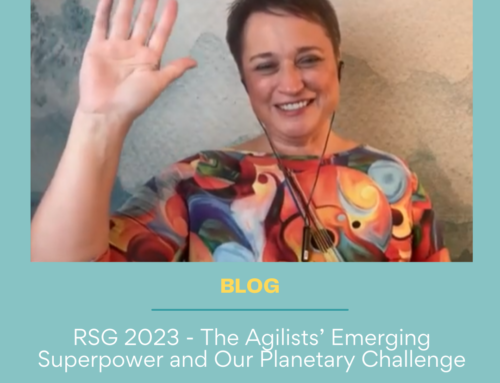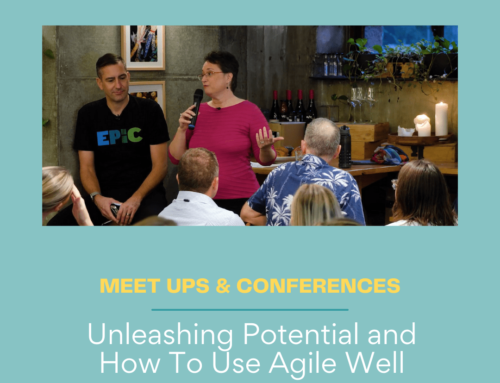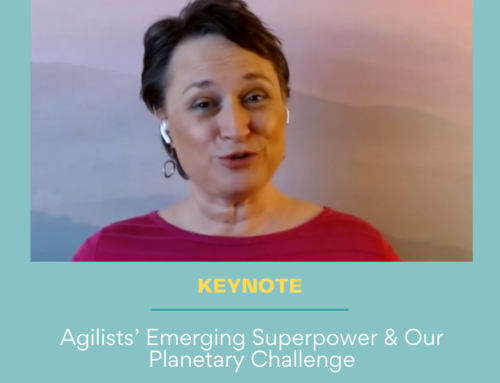LYSSA ADKINS SEPTEMBER 19, 2011
How do I motivate them?
You know, they just sit there saying nothing. When they do talk, it’s the same old ideas over and over. How do I get them engaged?
How do I get them to make good on their commitment?
How do I deal with one that just doesn’t get agile and taints the rest of them?
These are some of the questions I hear repeatedly from the agile coaches I encounter. And, agile coaches, I have this shocking news to tell you…it’s hardly ever them. If you notice a lack of motivation, commitment, engagement and openness look to yourself first. What are you doing – actively doing – to create an environment where people are free to be naturally motivated, engaged in dialogue and new ideas, focused on their commitment, and open enough to address the uncomfortable parts?
Natural motivation – There is nothing more motivating than knowing you have done a good day’s work and created something that someone else values. Forget the bowling outings, forget the “team-building exercises” (ok, do these for fun if you want). Instead, focus on an important boundary condition that allows people to create value: does the product owner (and team) know why we’re doing what we’re doing? why it’s important? can every single person on the team articulate the “why”?
True commitment – Do you ever claim commitment on their behalf? In the sprint planning meeting do you ask, “OK, so we’re committed to this, right?” and then pause only 2 seconds before you move on to the next thing? Commitment does not confer from one person to another. It must be taken up by each person, on their own. So, don’t confer your commitment on them. Instead, ask the question and be silent. Stay silent until someone else speaks. Then, let them talk it out. Let them dissent and push back if they need to. If you don’t help them do exactly this then you are just teaching them that you don’t stand for their commitment.
Engagement – If most of your agile meetings look like people sitting around a table, taking turns talking and being polite you can forget engagement. Engagement comes from being engaged in the current activity — where messy talking, thinking out loud, working on something together and interacting are the norm. So, instead of running meetings where take-turns-talking is the primary mode, design meetings that require people to interact with one another. This means that you’ll have to do some preparation for each meeting, to pick the activities or modes you offer the team. It’s ok, this is your job after all.
Openness with the uncomfortable – In the face of an uncomfortable moment or an uncomfortable topic, it’s easy to start jabbering on to fill in the “dead air.” But, guess what? The air isn’t dead. It’s actually quite alive. It’s alive with tension, perhaps confusion or sadness. Instead of filling it, show a sense of openness, and even curiosity, about what’s happening. Instead of shrinking from it, you can let the uncomfortable occur and then acknowledge: “It feels like a bomb just went off in here. What’s happening?”
Of course, I know that some of thee ideas may feel strange to you, especially this one. “How,” you might ask, “can I work with the uncomfortable when I’m afraid of what they might say?” There’s no easy answer for this – each person finds their own way when they get more skills. And, I hate to point you to my own work, but the truth is that those skills are built in the agile coaching classes offered by the Agile Coaching Institute. It’s where you get them. It’s where you practice them. It’s from these classes that you start to operate as a much more skilled and centered agile coach who can stand the uncomfortable, engage others and ensure they have what they need to fly.
Now…back to your current world.
Once in a while you do have that one person who just won’t get involved, who bad-mouths agile at every turn and who poisons the team. Notice that I said once in a while. Why only once in a while? Here’s what I have learned: Once you create an environment that supports interaction and commitment, you’ll find far fewer people in the “problem” category. The team members respond to both the boundary conditions and the freedom within the boundaries to be naturally creative, resourceful and whole. Because, guess what? They always were.
Agile coaches…please share with one another in the comments…
What do you actively do to create an environment where people are free to be naturally motivated, engaged in dialogue and new ideas, focused on their commitment, and open enough to address the uncomfortable parts?






